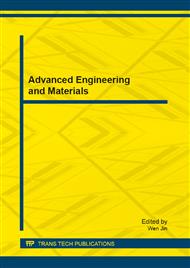[1]
C. W. Song, R. X. Zhao, H. Yang, Z. Zeng, J. Wu, Using fuzzy control for parallel-inverter system with nonlinear-load, IEEE International Conference on Electrical Machines and Systems, vol. 13, No. 9, pp.193-197, (2010).
Google Scholar
[2]
Y. F. Yang, Z. Y. Lv, A Hot-swappable Parallel Inverter System, Power Electronics, vol. 40, No. 4, pp.82-85, (2006).
Google Scholar
[3]
D. De, V. Ramanarayanan, Decentralized Parallel Operation of Inverters Sharing Unbalanced and Nonlinear Loads, IEEE Transactions on Industrial Electronics, vol. 25, No. 12, pp.3015-3025, (2010).
DOI: 10.1109/tpel.2010.2068313
Google Scholar
[4]
L. Xiao, W. B. Hu, W. Z. Jiang, Y. G. Yan, Research on master-slave controlled inverter parallel system, Journal of Southeast University, vol. 32, No. 1, pp.133-137, (2002).
Google Scholar
[5]
R. H. Kuang, T. P. Rong, A Simple Fuzzy Controller with an Adaptive PID Parameter, Journal of Huazhong University of Science and Technology, Vol. 29, No. 6, pp.25-30, (2001).
Google Scholar
[6]
H. Yi, J. Y. Dai, J. J. Wu, Research on modeling and control of the single-phase inverter system with a nonlinear load, IEEE international conference on intelligent control and automation, Vol. 32, No. 1, pp.6095-6100, (2008).
DOI: 10.1109/wcica.2008.4592869
Google Scholar
[7]
K. H. Ahmed, S. J. Finney, B. W. Williams, A Modified Stationary Reference Frame-Based Predictive Current Control With Zero Steady-State Error for LCL Coupled Inverter-Based Distributed Generation Systems, IEEE Transactions on Industrial Electronics, vol. 58, No. 4, pp.1359-1370, (2011).
DOI: 10.1109/tie.2010.2050414
Google Scholar
[8]
T. P. Chen, Zero-Sequence Circulating Current Reduction Method for Parallel HEPWM Inverters between AC Bus and DC Bus, IEEE Transactions on Industrial Electronics, vol. 59, No. 1, pp.290-300, (2012).
DOI: 10.1109/tie.2011.2106102
Google Scholar
[9]
T. Kawabata, S. Higashino, Parallel Operation of Voltage Source Inverters, IEEE Transactions on Industry Applications, vol. 24, No. 2, pp.281-287, (1998).
DOI: 10.1109/28.2868
Google Scholar
[10]
J. R. Kan, S. J. Xie, A. Z. Liu, Performance analysis of parallel system using LCL filter inverter unit, Electric Machines and Control, vol. 14, No. 2, pp.90-98, (2010).
Google Scholar


